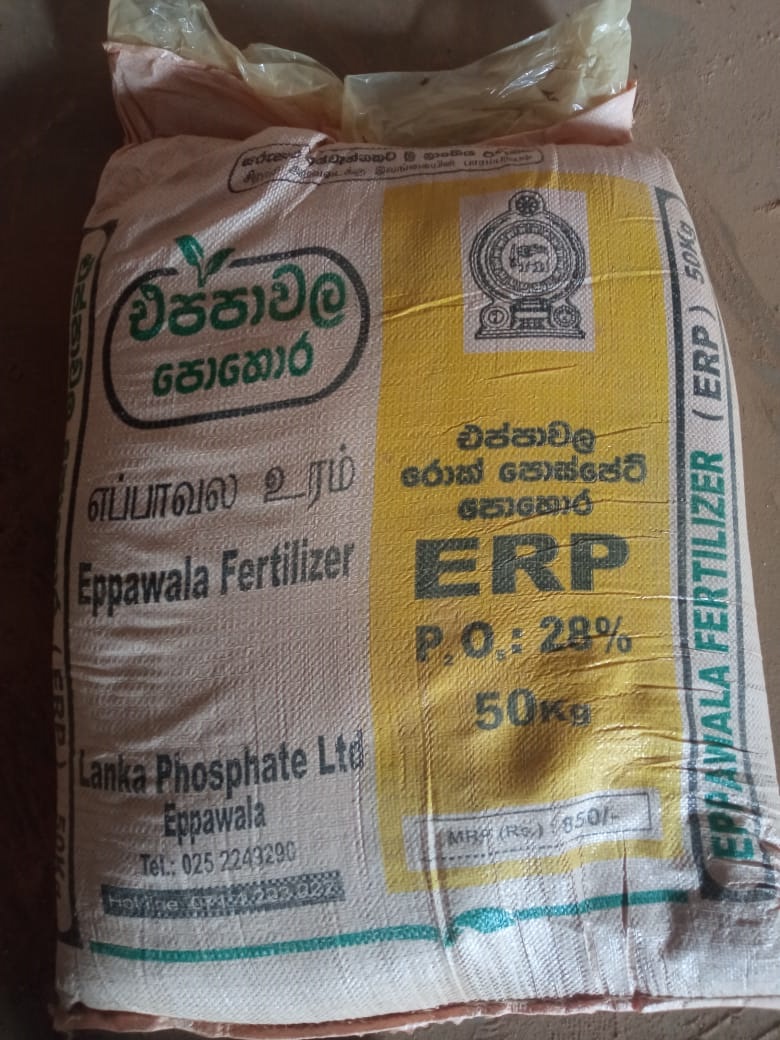
Eppawala is well known for its apatite deposit. This apatite contains phosphorus that has been used as a source of phosphorus fertilizer for about three decades. Eppawala deposit is one of the important apatite deposits of it’s type in the world. It can be classified as a high-grade ore. Eppawala Rock Phosphate fertilizer (ERP) has a high phosphate pentoxide content averaging 30-40%. At present Eppawala Rock Phosphate fertilizer is the only fertilizer extracted locally (except for Dolomite).
Use in the Plantation Sector
Tea plantations dominate 50% of the use of ERP. Rubber and Coconut plantations share 20% and 25% respectively. After 1990, there is evidence that certain companies in their paddy fertilizer mixtures use ERP as ”filler”. In the plantation sector, bulk of the fertilizer use comes from their private/ small holders. The Potential Market Comprising Tea, Rubber and Coconut sectors geographically dispersed in the country have over 1.2 million growers. Actual fertilizer use in comparison to the recommended dosage was at a very much lower level for both rubber and coconut crop sectors. There is substantial room for expansion of usage for rubber and coconut and this requires further promotion fertilizer use particularly with small holders.
| 1 Mt. | 50 Kg Bag |
| Rs. 20,000.00 + (VAT 18%) | Rs. 1,000.00 + (VAT 18%) |

Tea Sector
ERP is widely used in fertilizer mixtures for mature tea. There are about 206,600 Small Holdings in the tea sector. Today, the small holders produce 60% of the National tea production by using 40% of their holdings.

Rubber Sector
There are about 250,000 small holders in the rubber sector (Plantation sector statistical pocket Book, 1998). Their holdings cover over 100,000 hectares. Largely, there is a decrease in fertilizer use in rubber plantations after 1981

Coconut Sector
There are about 714,000 smallholdings in the coconut sector (Plantation sector statistical pocket Book, 1998). There are a few plantation companies in the sector. The actual ERP consumption was 4300 mt. in 1998. Low productivity, poor returns and price instability










